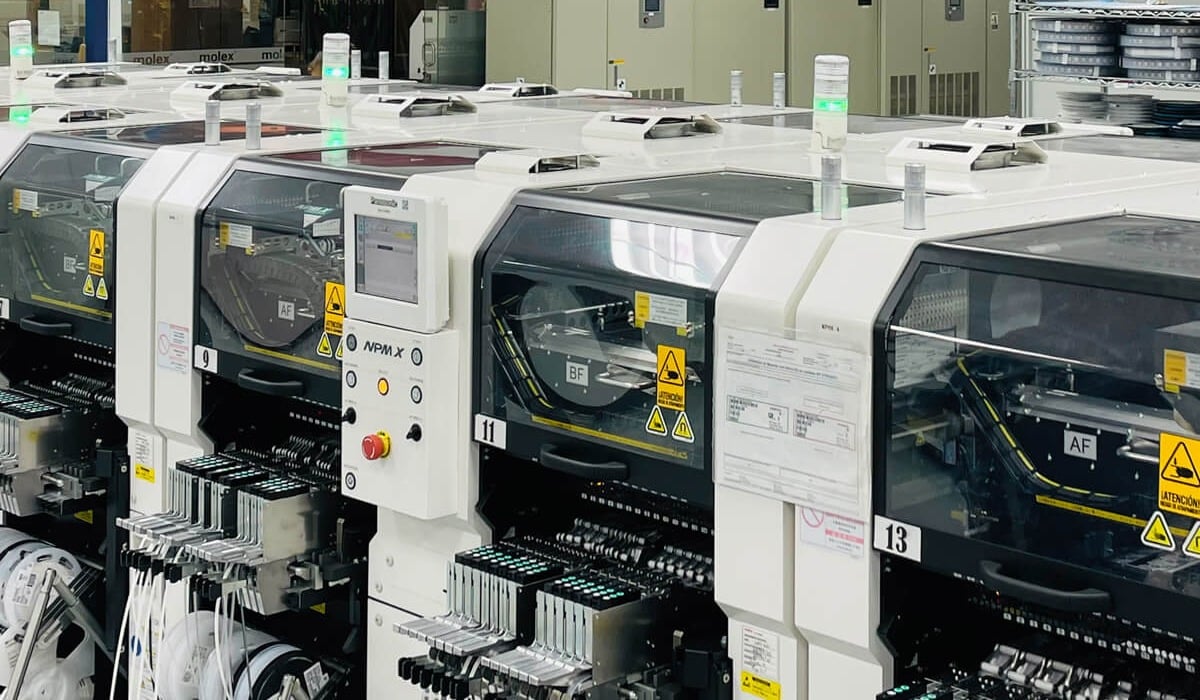Machine Management leveraging Intraratio's RunCard MES
Let's Get Technical!
Watch this video on how to leverage the comprehensive suite of machine...
By: Intraratio Team on Aug 07, 2023

As the global economy grapples with the lingering effects of the COVID-19 pandemic and subsequent inflation, the push towards digitization and automation is rapidly gaining momentum. With industries facing unprecedented challenges such as shorter product life cycles, increased demand for product variants, and high employee turnover rates, companies must adapt in order to stay competitive.
This article delves into the transformative power of data analytics, machine learning, and automation in the surface-mount technology (SMT) industry, exploring how these cutting-edge solutions can improve efficiency, reduce waste, and enable companies to thrive in this new digital era.
State of the Economy and the Push Towards Digitization
In the aftermath of the COVID-19 pandemic, companies are facing an uncertain economic climate with the Federal Reserve raising interest rates to combat inflation and growing geopolitical concerns. To remain competitive, companies are increasingly turning to data analytics and automation as a means of reducing costs and improving efficiency.
Furthermore, a report by McKinsey highlights the importance of digitization and automation in addressing other challenges such as shorter product technology life cycles, higher demand for product variants, high employee turnover rates, and the shift toward a circular economy. To overcome these challenges, companies must become more nimble and quickly pivot toward automating their processes.
The surface-mount technology (SMT) industry is experiencing significant changes, driven by factors such as reduced product life cycles and increased demand for product variants. Consumer electronics, in particular given their high volumes, are highly sensitive to even minor variations in process parameters, which can result in significant amounts of rework and negatively impact a company's bottom line.
As a result, companies must be agile and responsive in order to quickly fine-tune their manufacturing processes, reducing inefficiencies and minimizing waste. However, traditional optimization methods, which often rely on trial and error, can be time-consuming and costly. In the current environment, where companies are under greater pressure than ever to maximize efficiency and reduce costs, this approach is no longer sustainable.
It is widely acknowledged that most of the defects in SMT are caused by solder paste printing. In a perfect world, adhering to IPC-7525 stencil design guidelines or component specifications would result in the perfect release of solder and finish, in accordance with IPC-610 standards. However, we know that achieving this ideal outcome is far from guaranteed. Even with a flawless design, the SMT process is subject to many variables, including but not limited to stencil design, squeegee pressure, component placement pressure, reflow preheat, ramp rate, pad size, and pad finish. As a result, it can become a game of fine-tuning the stencil design to fit the downstream processes.
By leveraging highly structured data collection and applying analytics / machine learning, we can eliminate the inefficiency in the SMT process. We can link the relationships between component types to aperture size in the stencil, paste printing settings, location on the board, pick and place settings, temperature profile, and more. This will allow us to answer questions such as, "If we were to manufacture another board with different dimensions but with similar components, what would be the optimal stencil design, paste printing pressure and speed, and reflow profile?"
RMcKinsey report on discrete manufacturing with industry 4.0 https://uat.mckinsey.com/
Intraratio has developed a cutting-edge solution that automates the capture of every possible data point generated during the SMT process. With zero dedicated IT resources upon implementation. We can help establish connections with vendors such as stencil shops to capture any data generated during the stencil manufacturing process.
By leveraging our advanced data collection solutions, predictive models can be created to accurately forecast the outcome of the SMT process given any changes to the variables involved. This will enable process owners to quickly and accurately fine-tune the process, leading to improved efficiency, reduced waste, and increased throughput. With our innovative solution, companies can stay ahead of the competition and achieve greater success in the fast-paced world of manufacturing.
3 Key Differences Between ERP and MES Systems - The following are three crucial differences between Enterprise Resource Planning (ERP) and Manufacturing Execution Systems (MES).
Silicon Photonics: A Complex Supply Chain Requiring High Levels of Traceability - In this blog post, we will explore how traceability helps ensure the quality of silicon photonics products.
Machine data integration for automated traceability & process control - Let's dive into the details of machine integration on how it enables automated traceability and process control
Let's Get Technical!
Watch this video on how to leverage the comprehensive suite of machine...
Reaching production goals in a manufacturing business can seem like a continuous losing battle....
Manufacturing today is a complex orchestration of systems, processes, suppliers and people,...